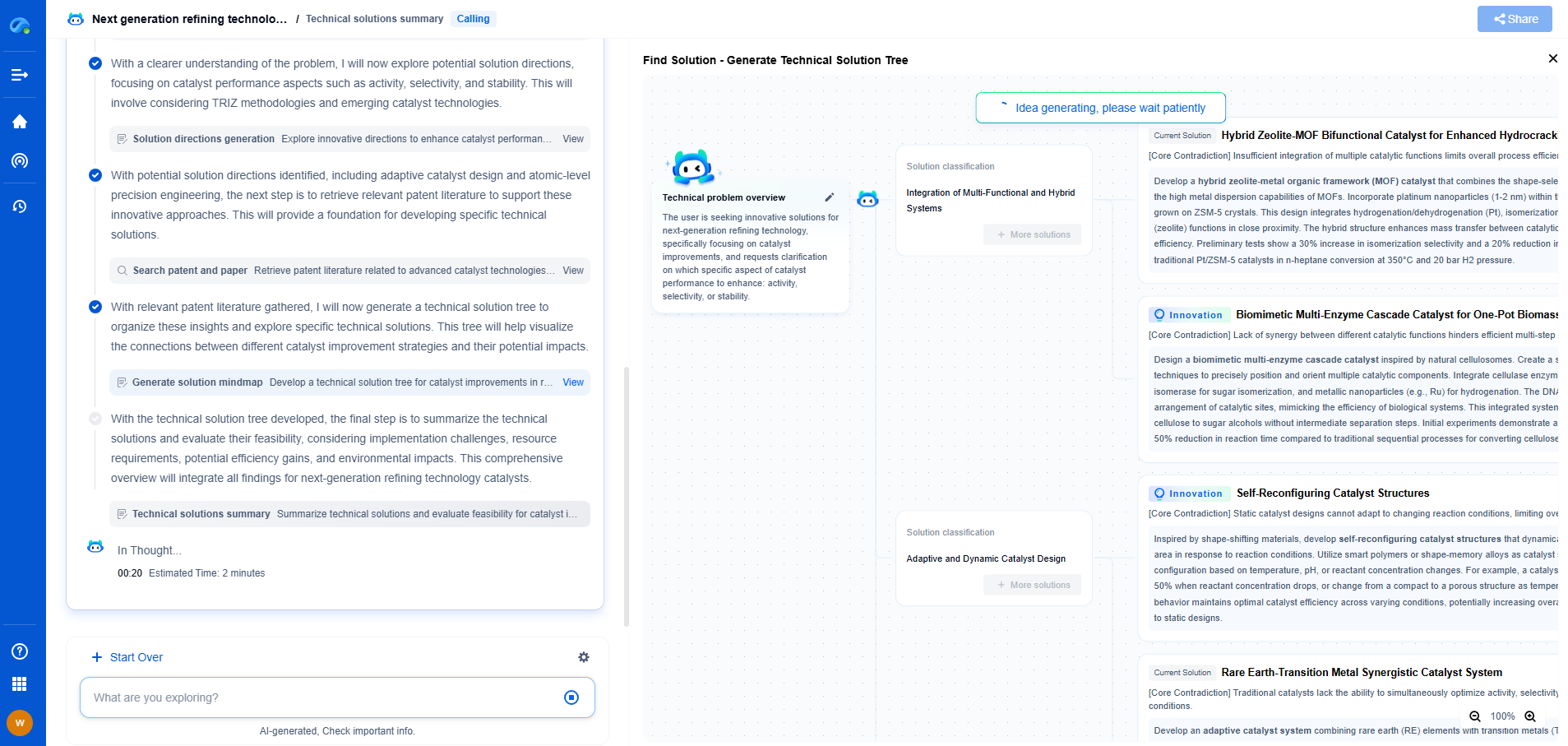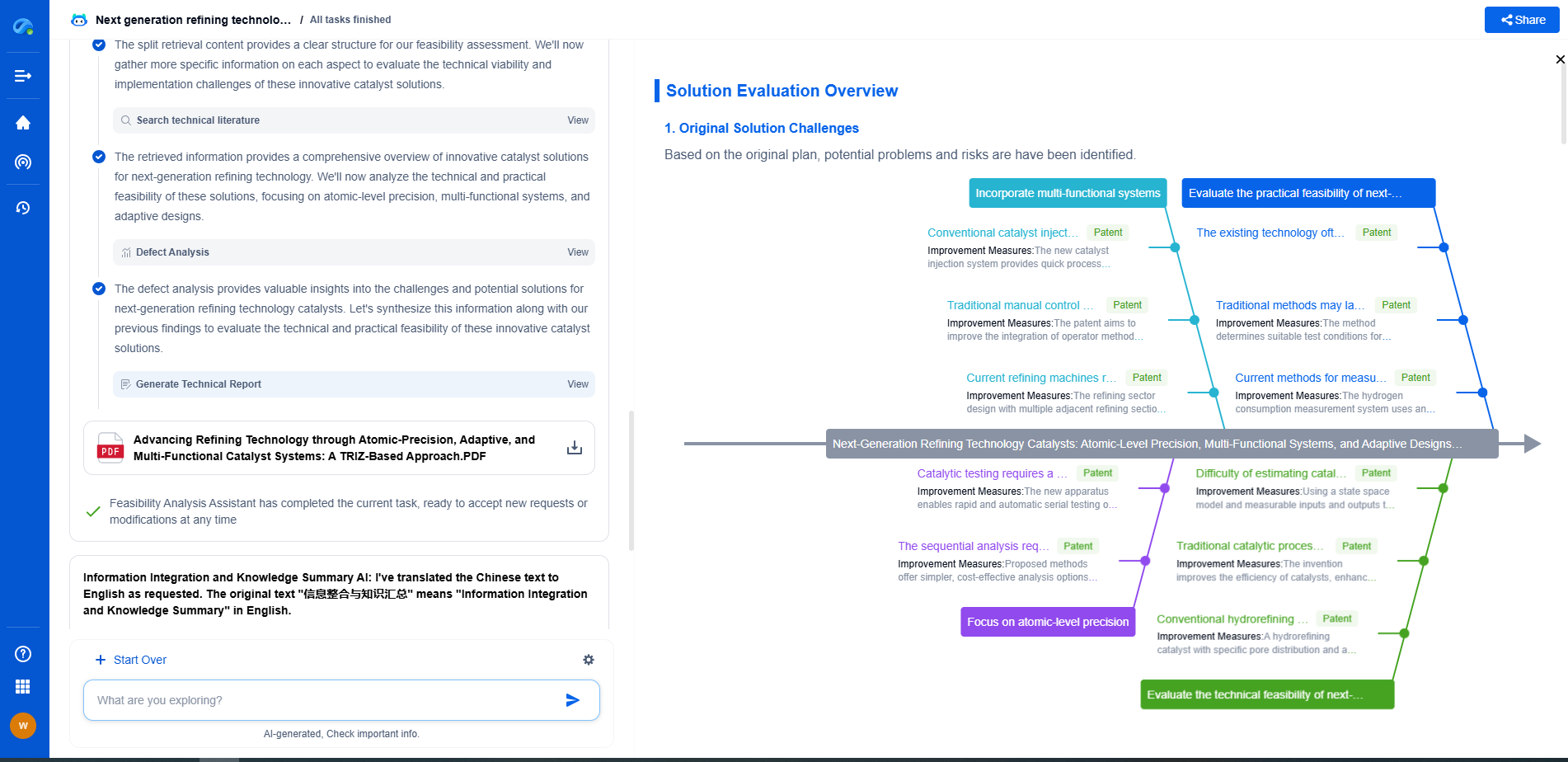How Does an Oscilloscope Help in Signal Analysis? DSO vs. MSO Explained
JUL 9, 2025 |
Oscilloscopes are crucial instruments in electronics and signal analysis, offering invaluable insights into the behavior of electrical signals. By visualizing signal waveforms, oscilloscopes allow engineers, technicians, and hobbyists to analyze the characteristics of electrical signals, diagnose issues, and optimize circuitry. Let's explore how oscilloscopes, specifically Digital Storage Oscilloscopes (DSOs) and Mixed Signal Oscilloscopes (MSOs), enhance signal analysis.
The Basics of Oscilloscopes
At their core, oscilloscopes are tools that graphically display voltage over time. This graphical representation is essential for understanding the dynamic behavior of electrical signals. Oscilloscopes help verify signal integrity, measure signal parameters like amplitude and frequency, and identify anomalies such as noise, distortion, or unexpected pulses.
Key Features of Digital Storage Oscilloscopes (DSOs)
Digital Storage Oscilloscopes (DSOs) have become a standard tool in both laboratory and field settings due to their versatility and precision. DSOs sample signals and store them digitally, allowing for detailed analysis and post-processing. Here are some of their key features:
1. **Memory Depth**: DSOs offer significant memory to store waveform data, enabling detailed analysis of complex signals over extended periods.
2. **Advanced Triggering**: DSOs provide sophisticated triggering options, which allow users to capture specific events within a signal. This is crucial for isolating and analyzing specific parts of a waveform.
3. **Waveform Analysis Tools**: DSOs come with a range of built-in tools for measuring and analyzing waveform characteristics. Automatic measurements, FFT analysis, and math functions streamline the process of signal analysis.
4. **User Interface**: Modern DSOs have intuitive user interfaces with high-resolution displays and graphical representations, which make it easier to interpret complex data.
Exploring Mixed Signal Oscilloscopes (MSOs)
Mixed Signal Oscilloscopes (MSOs) expand on the capabilities of DSOs by integrating digital logic analysis. This makes MSOs particularly valuable in applications where both analog and digital signals need to be analyzed simultaneously.
1. **Analog and Digital Channel Integration**: MSOs combine the functionalities of an analog oscilloscope with those of a logic analyzer. This allows for simultaneous observation of analog waveforms and digital signal states, facilitating comprehensive system analysis.
2. **Correlation of Analog and Digital Signals**: By correlating analog and digital signals, MSOs are instrumental in debugging embedded systems, where interactions between software and hardware components need to be scrutinized.
3. **Versatile Triggering and Decoding**: MSOs provide versatile triggering on both analog and digital channels, along with protocol decoding capabilities for common communication standards like I2C, SPI, and UART.
4. **Efficient Problem Solving**: MSOs are particularly useful in identifying timing issues, glitches, or signal integrity problems that occur in mixed-signal environments.
Choosing Between DSO and MSO
Selecting the right type of oscilloscope depends on the specific requirements of your projects. Here are a few considerations to keep in mind:
1. **Nature of the Project**: If your work predominantly involves analog signals, a DSO is likely sufficient. However, if you frequently deal with embedded systems or require detailed analysis of digital signals, an MSO may be more appropriate.
2. **Budget Constraints**: MSOs tend to be more expensive due to their additional capabilities. Consider whether the added functionality justifies the cost for your specific needs.
3. **Future-Proofing**: Even if your current projects are analog-focused, investing in an MSO could be beneficial as it offers flexibility for future projects involving digital systems.
Conclusion
Oscilloscopes are indispensable tools for anyone involved in electronics and signal analysis. DSOs provide robust solutions for capturing and analyzing analog signals, while MSOs offer the additional capability to handle digital signals, making them ideal for mixed-signal applications. By understanding the strengths and applications of each type of oscilloscope, users can make informed decisions that enhance their work and improve the accuracy and efficiency of their signal analysis endeavors.
Navigating the evolving world of electrical measurement—from high-precision signal integrity to advanced test protocols like BERT or TDR—demands more than just expertise; it demands smart tools.
Patsnap Eureka empowers you to keep up—by turning complex patent data, technical parameters, and industry signals into actionable insight. It’s your AI partner for exploring what’s next in test, measurement, and electrical diagnostics.
💡 Try Patsnap Eureka for free and see how it transforms the way you work with electrical measurement technologies.
- R&D
- Intellectual Property
- Life Sciences
- Materials
- Tech Scout
- Unparalleled Data Quality
- Higher Quality Content
- 60% Fewer Hallucinations
Browse by: Latest US Patents, China's latest patents, Technical Efficacy Thesaurus, Application Domain, Technology Topic, Popular Technical Reports.
© 2025 PatSnap. All rights reserved.Legal|Privacy policy|Modern Slavery Act Transparency Statement|Sitemap|About US| Contact US: help@patsnap.com

